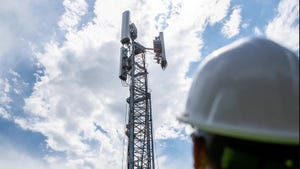Real-time Big Data opportunities for CSPs: the advent of Fast Data
Routinely processing billions of call detail records per day, big data is clearly not a new phenomenon for CSPs. What is changing is the way in which they need to interact with it.
April 23, 2015

Telecoms.com periodically invites expert third-party contributors to submit analysis on a key topic affecting the telco industry. In this article David Peters, CEO and Founder of Emagine International, explore how CSPs can change the way they use data to improve their customer relationships.
Routinely processing billions of call detail records per day, big data is clearly not a new phenomenon for CSPs. What is changing is the way in which they need to interact with it. In response to their highly competitive operational environment, and changing consumer expectations regarding how they interact with the brands around them, CSPs are starting to realise the need to react within milliseconds to customer activity on their networks. Rivalling the sort of real-time interaction that customers receive from Google, or a variety of OTT players, we say that 250milliseconds can make the difference between retaining and losing a customer. This is the era of not just big data, but fast data.
The opportunity
CSPs today are under enormous margin and growth pressure, needing to constantly stay on top of network services to ensure call quality and data speeds and keep up with the competition, while protecting their customer relationships from the threat from OTT challengers. While brand marketing strategies outside of the telecoms space are becoming increasingly sophisticated in how they target and interact with the consumer, operators need to catch up, leveraging the vast stores of data that they have access to – and quickly, in a way that directly impacts on customer actions.
This is also driven by customer expectations. A new generation of digitally-confident consumers have come to expect the CSP’s services and interactions to be as compelling as the many OTT apps that populate their screens. They want CSPs to engage with them in real-time, with a user experience at least rivalling that delivered on their smart devices.
Picture a customer who cannot post their comment on Instagram because they have just burnt through their data bundle watching a video on YouTube, for example. They need to be informed of their burn rate, and be made a personalised offer for a data bundle top-up in real-time; before they experience the frustrating “wheel of death” that indicates buffering – and attribute that frustration to their CSP. Alternatively, if data services simply continue at high “out of bundle” rates with no intelligent customer interaction, this will inevitably lead to “bill shock”, and drive customer dissatisfaction and damage to the CSP’s brand.
The ability to capture event triggers as they happen on the network and easily communicate corresponding offers as they occur will therefore be fundamental to revenue streams and churn rates. Delivering a personalised message while the customer device is still in their hand could be the difference between an extra data bundle sale and no sale, or even an incumbent mobile service provider and a competitor. The mantra of ‘know your customer well and deliver what your customer needs’ has never been more true, especially in today’s highly competitive telecommunications landscape. Luckily, CSPs are ideally positioned at the heart of their customers’ digital lives to live up to that mantra.
With large customer bases, CSPs have unparalleled information about where a customer is, who they call, which apps they use or sites they visit. New data is generated every time a call, text or chat is made or received, a notification appears, or when an app is used; a comment is posted, liked, tweeted or the web is browsed. Network data also provides additional important information in real-time. Whether the customer experiences network latency when downloading an app, a dropped call when speaking with a friend, or runs out of a data bundle whilst viewing a popular YouTube video; all are detectable by the CSP as they happen. By linking this real-time information with more traditional customer insights such as customer profiles, device type, tariff plan and billing and recharge patterns, CSPs have all the information necessary to build an unparalleled understanding of their customers, in the moment.
This data can be used determine the most appropriate interaction with a customer at any moment in time. Whether that be a tailored product or service, a personalised pricing plan, or delivering a relevant user experience at the right location and at exactly the right moment. They all represent a major opportunity for operators to harness customer data to build tailored services and interactions that are personalised, relevant and engaging, and to do so in real-time.
The challenge
The task is not however without its challenges. With the advent of smart devices and the growing volume of data available from apps, sensors, RFID tags, internet browsing and social media, the sheer volume and diversity of the contextual and signalling data available to a telecoms network operator has increased the undertaking significantly. Moreover, in the next decade more and more data will be created by the “Internet of Things” – sensors and devices connected to the Internet from smart phones, to tablets to cars, electricity networks.
CSPs therefore need to evolve their businesses to enable them to personalise the customer experience as it’s taking place. Big data analysis and machine learning platforms are required to process the billions of records every day and then interpret the output in order to enable business rules and intelligent pattern recognition algorithms, identifying relevant events, trends or patterns which would trigger the need for a proactive customer interaction – “moments of truth” as we call them. Architectures are needed that enable operators to capitalise on the vast quantity of data available to them in real-time, evolving their strategies from Big Data only, to also include Fast Data.
Fast data architectures
Historically, customer interaction and marketing systems are rarely architected to tap into real-time customer data from the network. A typical campaign management solution is integrated with a data warehouse, built with inherent latency, and many batch processes. Often, source systems are legacy platforms that were never designed for real-time; the best that can be achieved is a “near real-time” integration.
The inherent latency of data means that personalisation decisions cannot occur in real-time, hence any personalised customer interactions occur too late, and lose relevance. To achieve real real-time personalisation levels, CSPs need to transition business and marketing infrastructures away from batch-based integration of systems to agile, real-time applications.
Such applications are architected to tap directly into the massive volume of network level data, circumnavigating the legacy batch-based systems and going direct to the network source systems. They ingest network level data, undertaking contextual decisioning, and initiating customer interactions, all in real-time. This is the world of Fast Data applications.
Agility and flexibility
To date, most real-time interactions with customers are established within the network, which are designed for packet switching, or real-time rating and charging. Typically such messaging is configured within the network elements themselves, which are understandably protected at an engineering team level, who must maintain the core network.
However, business and marketing teams need to react to the market quickly, and have the flexibility and agility to configure new customer interactions in real-time. From the business point of view, a “one size fits all” message may be fast, but it is a very blunt instrument. The objective of the CSP is to identify the key “moments of truth” for each customer, and personalise the individual interaction in that moment.
Business users must then also be able to measure the business impact of their actions – whether that be on usage, churn, ARPU or Net Promoter Scores (NPS). This requires a robust target versus control methodology, and the appropriate analytics and insights framework; none of which are available within traditional network elements.
To achieve this CSPs are evolving their business and marketing infrastructure to agile, real-time applications designed for this purpose.
Conclusion
CSPs have a major opportunity to harness the treasure trove of customer data at their fingertips, and meet increasing customer expectations by building tailored services and interactions that are personalised, relevant and engaging in real-time. The journey time from event to decision to action is critical however. Processing billions of records in real-time and reacting within milliseconds can be the make or break for a CSP in this new “fast data” world.
However, real real-time brings usage and trigger based marketing campaigns to life with the ability to deliver a reward or notification instantaneously upon a threshold or target being reached. By executing campaigns and communications in real-time CSPs are now quite literally able to deliver messages and rewards while the customer’s device is in their hand, unlocking the potential for a stronger competitive position, lower churn, and increased revenue and margins.
 Formerly of Bouygues Telecom France and Optus in Australia, David has extensive experience delivering closed-loop marketing solutions for clients in Asia, Europe and Australia. An experienced Telco marketer with a strong track record in delivering increased revenues and decreasing churn for mobile operators, David turned his entrepreneurial dreams to reality when he founded Emagine in 1998. He is an Alumnus of the Harvard Business School, having completed the Owners and President’s Management Program in 2014. He also holds a Bachelor of Commerce degree (Marketing major) from the University of New South Wales, Australia.
Formerly of Bouygues Telecom France and Optus in Australia, David has extensive experience delivering closed-loop marketing solutions for clients in Asia, Europe and Australia. An experienced Telco marketer with a strong track record in delivering increased revenues and decreasing churn for mobile operators, David turned his entrepreneurial dreams to reality when he founded Emagine in 1998. He is an Alumnus of the Harvard Business School, having completed the Owners and President’s Management Program in 2014. He also holds a Bachelor of Commerce degree (Marketing major) from the University of New South Wales, Australia.
Read more about:
DiscussionAbout the Author(s)
You May Also Like











_1.jpg?width=300&auto=webp&quality=80&disable=upscale)


.png?width=800&auto=webp&quality=80&disable=upscale)